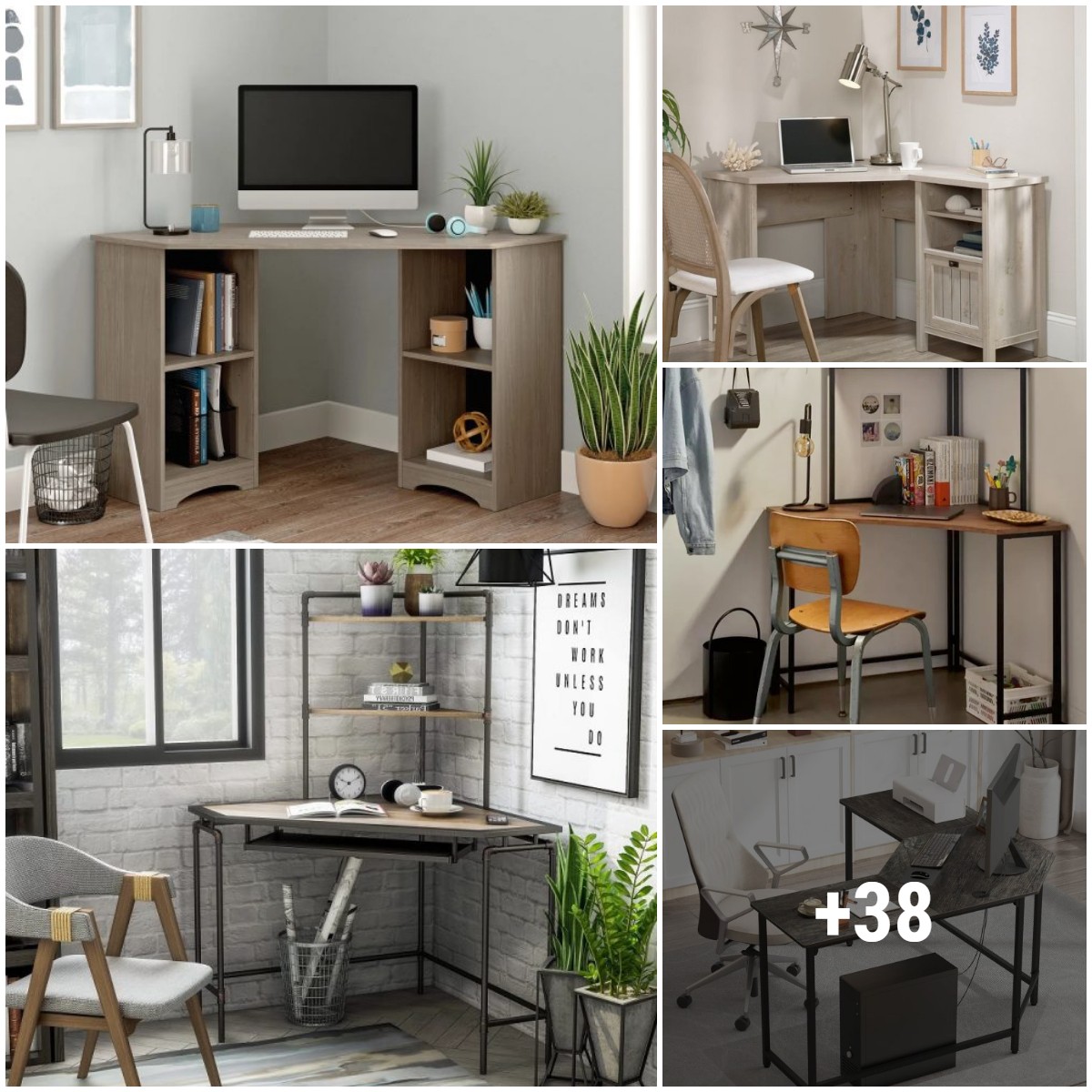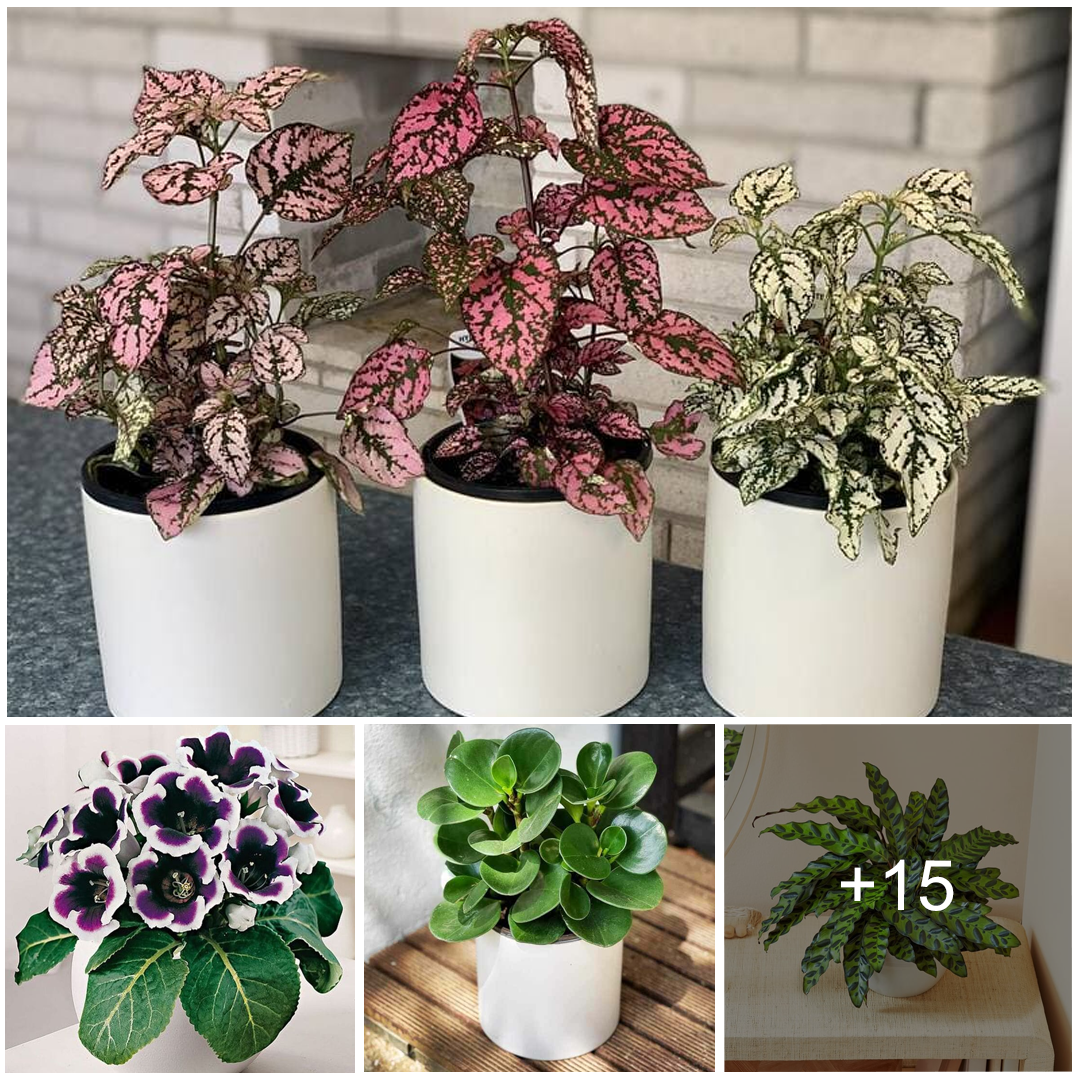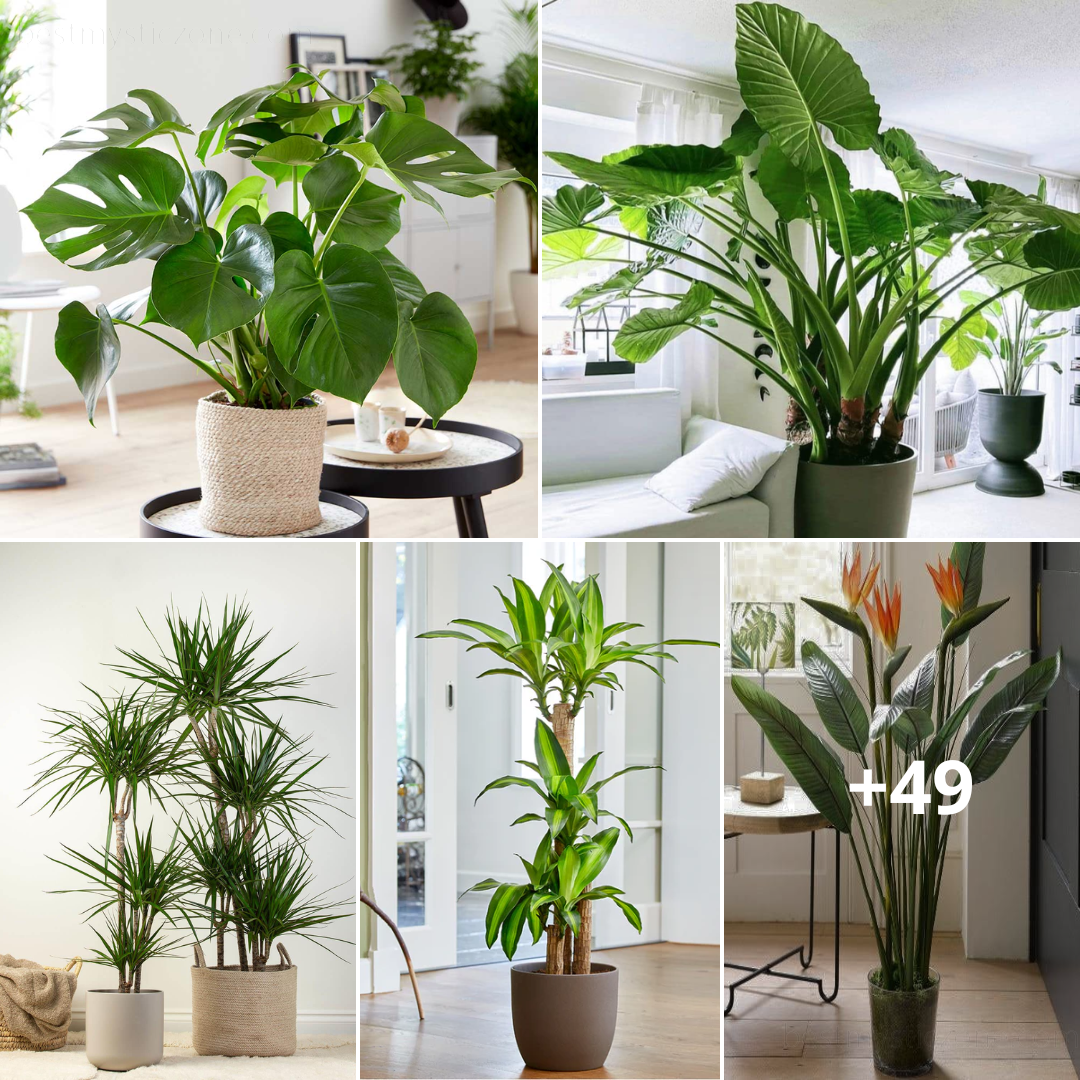Indoor Ferns are a lush and rewarding addition to any indoor space. Plus, you have plenty of options, each with vibrant, cascading fronds that stand out among other indoor plants. In this guide, I’ll share the best types of indoor ferns and essential growing and care tips for each.
The Best Types of Indoor Ferns
Here, you’ll find a collection of my favorite ferns that thrive in various indoor environments. I’ve included a brief care guide for each so you can find the perfect pick for your own unique living space.
1) Staghorn Fern (Platycerium)
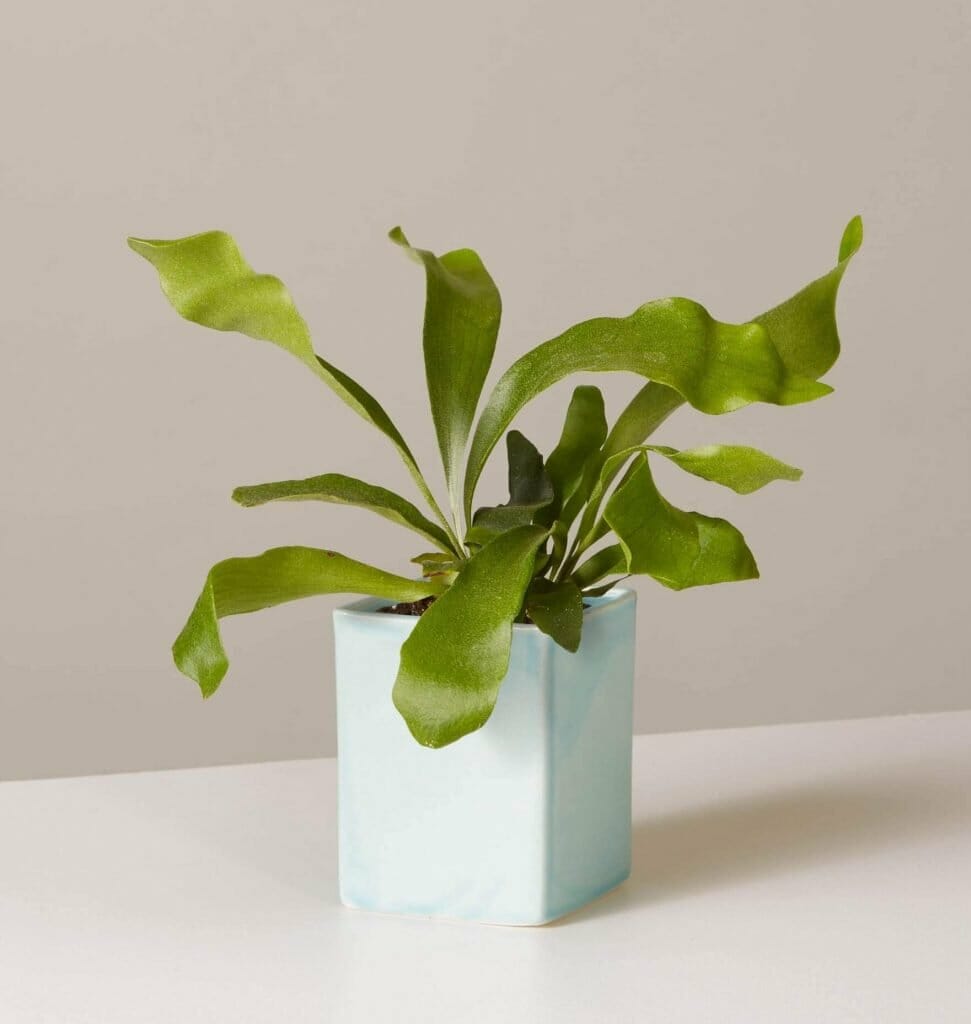
About:
Staghorn or elkhorn ferns are from the genus Platycerium, which makes up about 18 unique fern species. Staghorn ferns are unique compared to many other popular ferns in that they are epiphytes, living on trees instead of in the soil. They have pronounced sporophytes, their stags, and pronounced gametophytes, the shields. Both are separate parts of the staghorn fern’s life cycle.
They’re also great at purifying the air and look stunning in hanging baskets in addition to tabletop pots and planters.
How to Care for Staghorn Ferns:
| DIFFICULTY: | Medium – requires regular monitoring of light, temperature, and moisture. Thrives in a loose potting mix if grown in soil. |
| LIGHT: | Thrives in medium to bright indirect light. |
| TEMPERATURE: | Loves temperatures ranging from 55 to 85F. Try to avoid, and areas that are prone to cool drafts. |
| WATERING: | Water every 1-2 weeks, allowing the soil to dry out approximately halfway down between waterings. Increase the frequency if your plants are exposed to increased light conditions. |
| FEEDING: | Young staghorn ferns can be fed monthly during spring and summer with an all-purpose houseplant feed. Only do this every other month or less in the winter. More mature staghorn ferns will only require feeding once or twice a year. |
| TOXICITY: | Pet and human-friendly. |
2) Boston Fern (Nephrolepis exaltata)
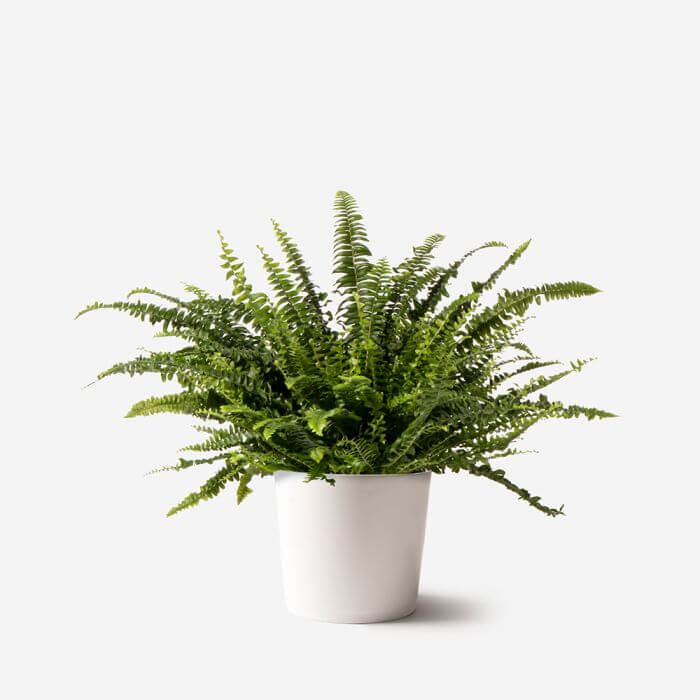
About:
Boston ferns are one of the most popular varieties of this plant. Their scientific name is Nephrolepis exaltata, and they belong to the Lomariopsidaceae family. This is a hardy, evergreen perennial plant with long, textured fronds. They are versatile and easy to care for, making them an excellent choice for first-time fern owners.
NASA included Boston ferns in their clean air study, confirming that they helped remove formaldehyde, xylene, and toluene from the air.
How to Care for Boston Ferns:
| DIFFICULTY: | Easy. This is a hardier fern variety but requires ample humidity and particular light conditions. Keep an eye out for common Boston fern pests and diseases. |
| LIGHT: | This variety does best with filtered light. Around two hours of indirect light works well. |
| TEMPERATURE: | This plant loves temperatures from 60 to 75F. |
| WATERING: | This plant needs regular watering and consistent moisture in the soil. If you lift your fern and it feels light, it needs watering. This plant loves humidity, so try regular misting or placing the plant in a high-humidity location like a bathroom. |
| FEEDING: | Boston ferns do not need much fertilizer. Feed your plant once a month or less in the summer months and repot every 18 months or so. |
| TOXICITY: | Pet and human-friendly. |
3) Bird’s Nest Fern (Asplenium nidus)
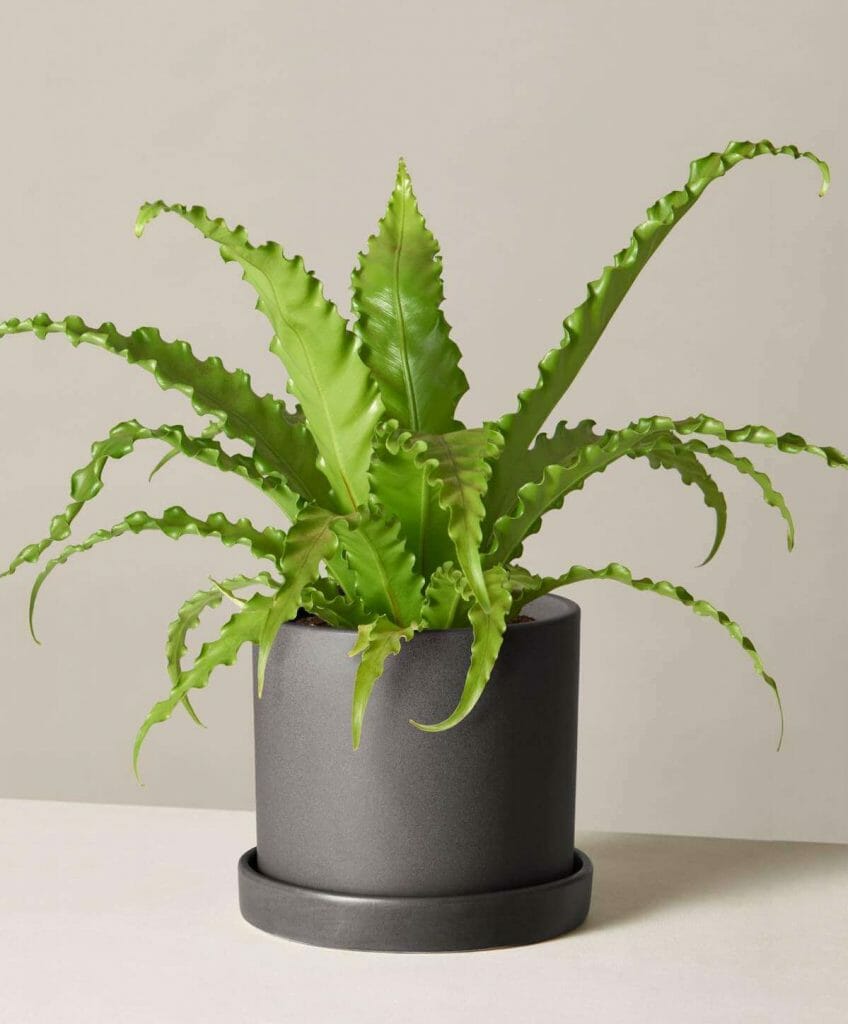
About:
Bird’s nest ferns, or Asplenium nidus, are epiphytic plants. They grow in a clump that resembles a bird’s nest. This plant’s shape, size, and texture make it a great addition to any room. This plant is unique because it grows in palm trees, another reason it may have earned its name.
How to Care for Bird’s Nest Ferns:
| DIFFICULTY: | Medium. Thrives in loose, fast-draining, and slightly acidic soil. |
| LIGHT: | Does best in medium to bright indirect light. |
| TEMPERATURE: | Thrives in temperatures ranging from 65 to 75F. |
| WATERING: | Thrives with weekly watering. Allow the soil to dry between waterings. |
| FEEDING: | Feed with a half-strength fertilizer every other week or less during the growing season. |
| TOXICITY: | Pet and human-friendly. |
4) Kimberly Queen Fern (Nephrolepis obliterata)
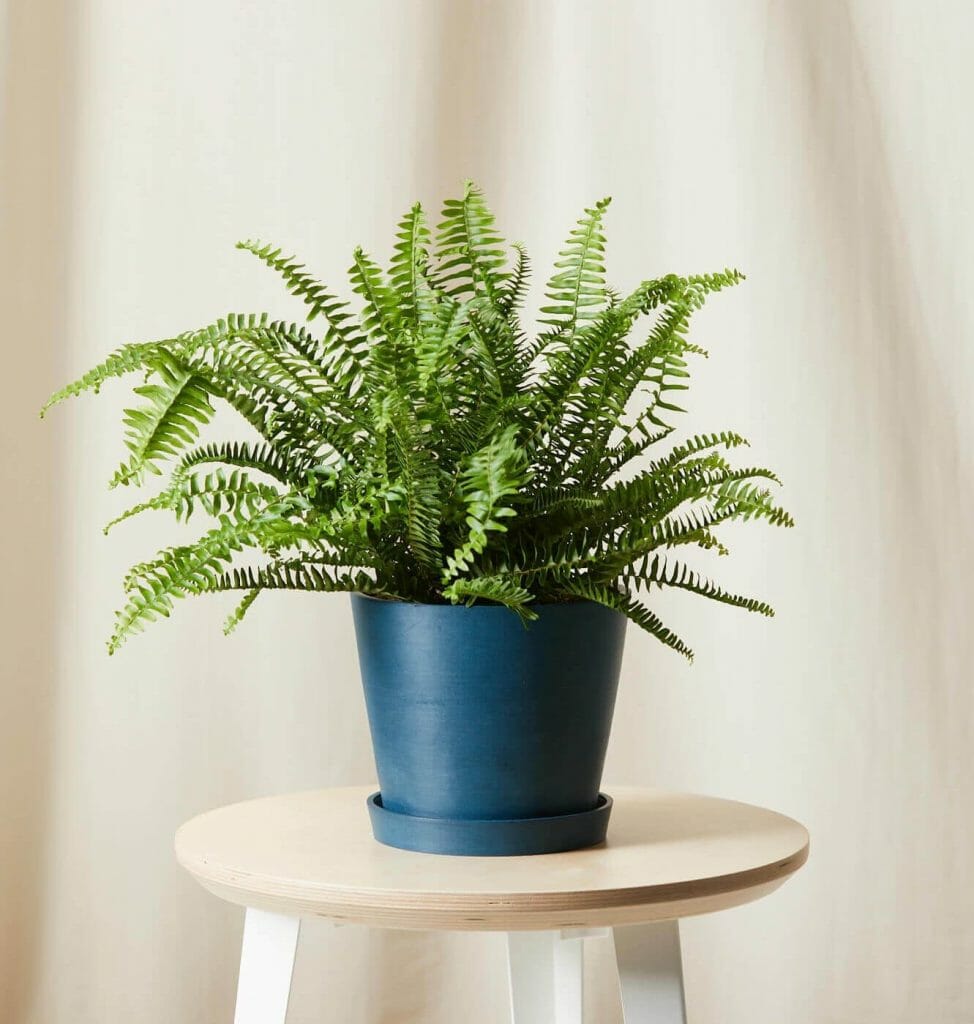
About:
Kimberly Queen Ferns, or Nephrolepis obliterata, is originally from Australia. This plant is more sensitive than the hardier ferns like the Boston fern, making it a bit more challenging to care for. However, this plant has beautifully textured fronds and adds a lovely aesthetic to any indoor environment.
How to Care for Kimberley Queen Ferns:
| DIFFICULTY: | Difficult. |
| LIGHT: | Prefers bright, indirect light. |
| TEMPERATURE: | Thrives in 60 to 75-degree temperatures. |
| WATERING: | This plant is sensitive to both over and under-watering. Water it regularly, but allow the soil to dry in between waterings. |
| FEEDING: | Fertilize monthly during the growing season with a balanced fertilizer. |
| TOXICITY: | Pet and human-friendly. |
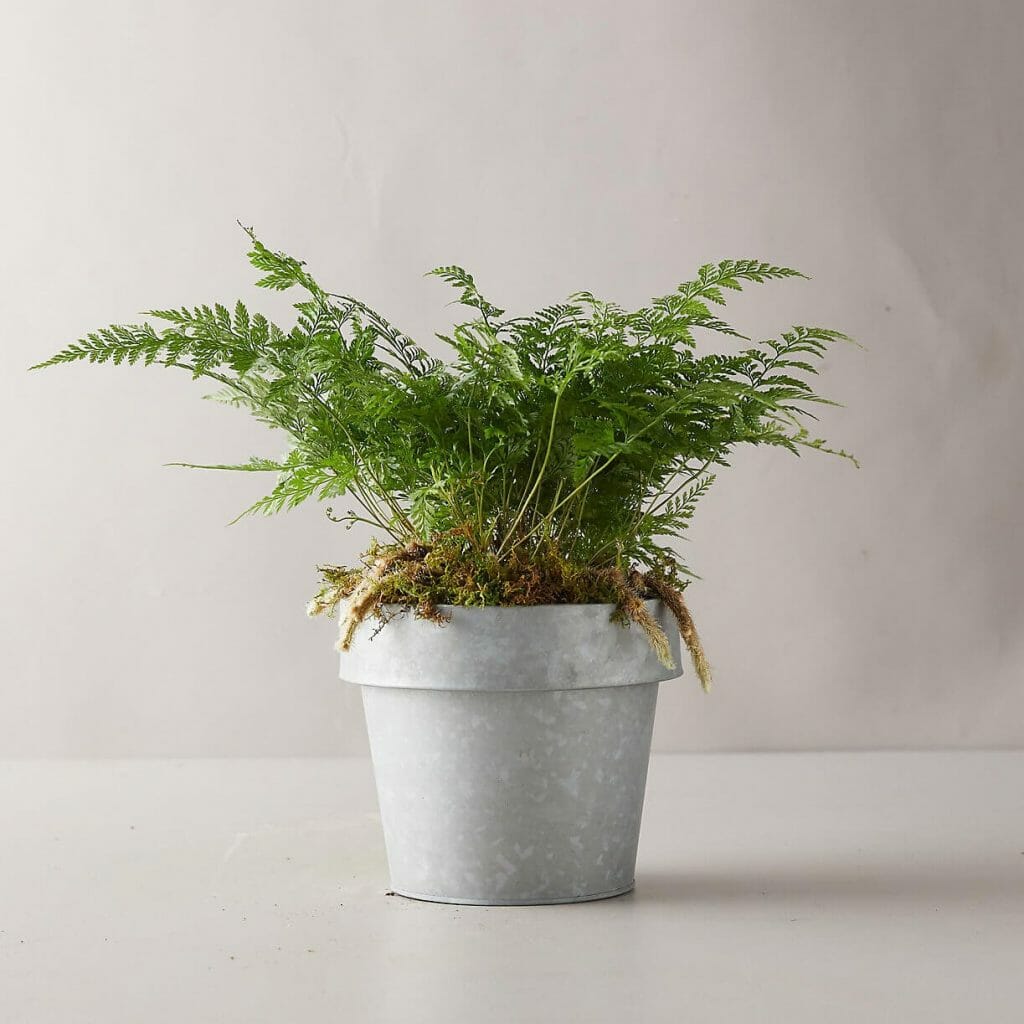
About:
Rabbit Foot Ferns are a member of the genus Davallia, which includes about 40 other species. It gets its name from furry rhizomes that emerge from the base of the plant. These rhizomes grow atop the soil and have an appearance resembling rabbit feet.
| DIFFICULTY: | Medium. |
| LIGHT: | Requires bright, indirect light. |
| TEMPERATURE: | Enjoys temperatures ranging from 70 to 75F. |
| WATERING: | It needs light, but frequent watering to keep the soil moist. |
| FEEDING: | Use a balanced fertilizer to feed this plant monthly during the growing season. |
| TOXICITY: | Pet and human-friendly. |
6) Maidenhair Fern (Adiantum)
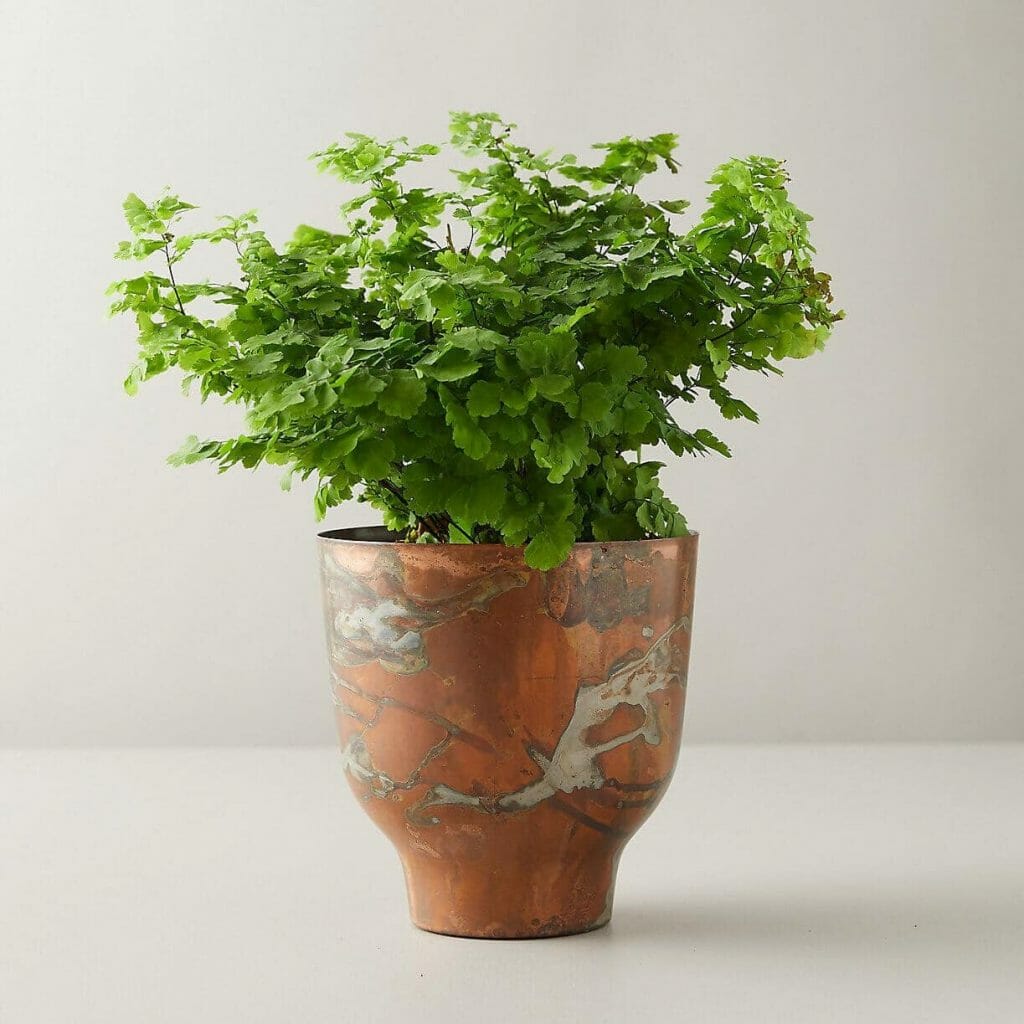
About:
Maidenhair ferns belong to the genus Adiantum, which includes around 250 other species. This is a more delicate variety of fern, but their beautiful, lacy appearance makes them worth the effort. Once you’ve learned how to maintain one of the hardier varieties, you can try this gorgeous, albeit sensitive, fern variety.
How to Care for Maidenhair Ferns:
| DIFFICULTY: | Difficult. |
| LIGHT: | Maintain bright, indirect light, and avoid direct sunlight or low light conditions. |
| TEMPERATURE: | Thrives in temperatures ranging from 60 to 70F. |
| WATERING: | Water often enough to maintain consistent soil moisture without leaving its environment soggy. |
| FEEDING: | Feed this plant with half-strength fertilizer each month year-round. |
| TOXICITY: | Pet and human-friendly. |
7) Asparagus Fern (Asparagus densiflorous ‘sprengeri’)
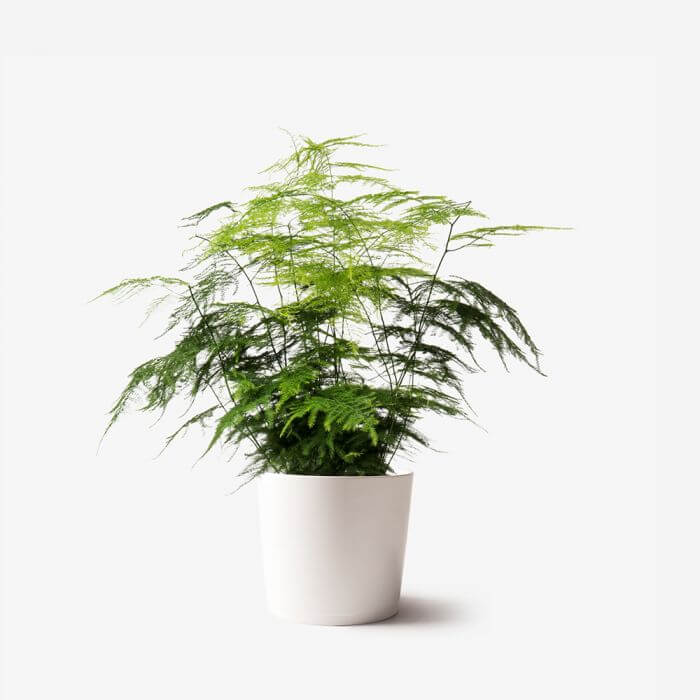
About:
Asparagus ferns, or Asparagus densiflorous ‘sprengeri’ has small, needle-like fronds. Unlike other ferns, this plant has thorns, so touching can be painful. This plant is commonly considered a part of the fern species as it requires similar care. However, it belongs to the Asparagus genus, meaning it is unrelated.
How to Care for Asparagus Ferns:
| DIFFICULTY: | Medium. |
| LIGHT: | This plant can tolerate direct sun but prefers bright, filtered light. |
| TEMPERATURE: | This plant is more tolerant of high temperatures; around 70F is best. |
| WATERING: | Water enough to keep the soil moist and mist its foliage to keep it bright and happy. |
| FEEDING: | Use half-strength fertilizer to feed this plant monthly. |
| TOXICITY: | Pet and human-friendly. |
8) Frosty Fern (Selaginella)
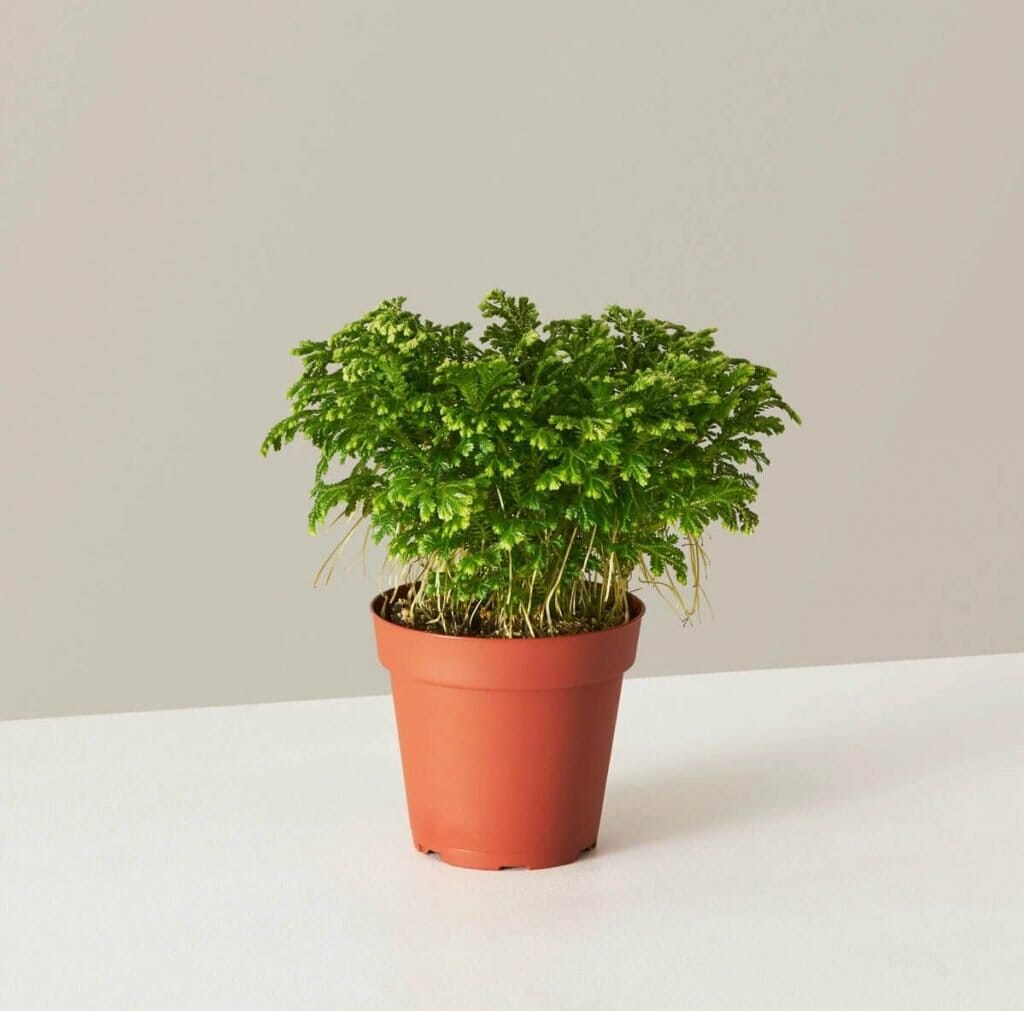
About:
Frosty ferns, or Selaginella, is the only vascular genus of plants in the Selaginellaceae family. They have scale-shaped leaves with a frosty coloring. They are a beautiful, wintery addition to any indoor environment, and their love of humidity means it does well in a terrarium.
How to Care for Frosty Ferns:
| DIFFICULTY: | Medium. |
| LIGHT: | This plant loves bright, indirect lighting. |
| TEMPERATURE: | Thrives in temperatures between 60 and 80F. |
| WATERING: | Water this plant enough to keep the soil consistently moist. |
| FEEDING: | Feed with diluted fertilizer weekly during the growing season. |
| TOXICITY: | This plant is toxic to cats. |
9) Foxtail Fern (Asparagus declinatus)
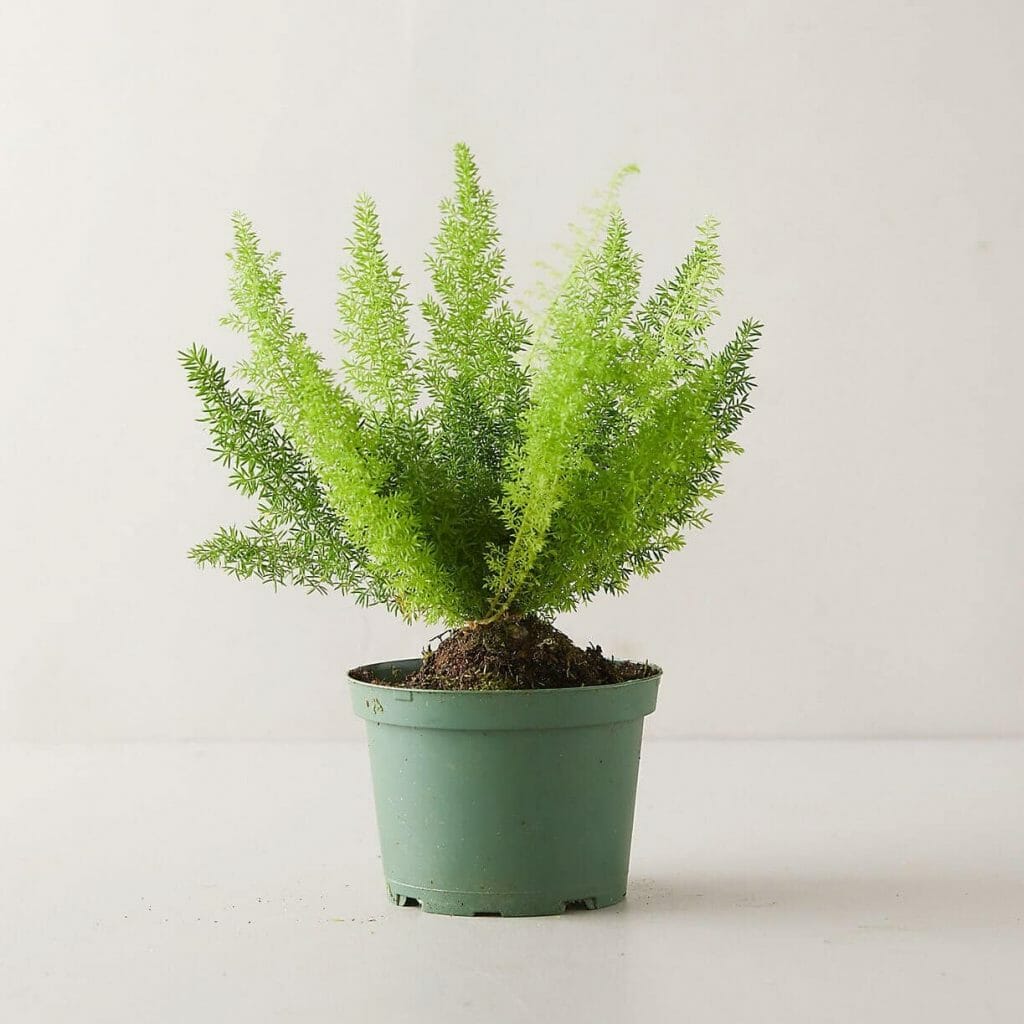
About:
Foxtail ferns, or Asparagus declinatus, are a variety that also falls into the Asparagus genus, meaning they are not actually ferns. They have beautiful, thick, and curly foliage resembling a fox’s tail, which is likely where this plant gets its name.
How to Care for Foxtail Ferns:
| DIFFICULTY: | Medium. |
| LIGHT: | This plant enjoys bright light and indirect light, so lightly shaded areas work well. |
| TEMPERATURE: | Avoid temperatures lower than 75F. |
| WATERING: | This plant needs regular watering. Water at least once a week, letting no more than the top two inches of soil dry out between waterings. |
| FEEDING: | Fertilize once a month with a standard fertilizer. |
| TOXICITY: | Pet and human-friendly. |
10) Lemon Button Fern (Nephrolepis cordifolia)
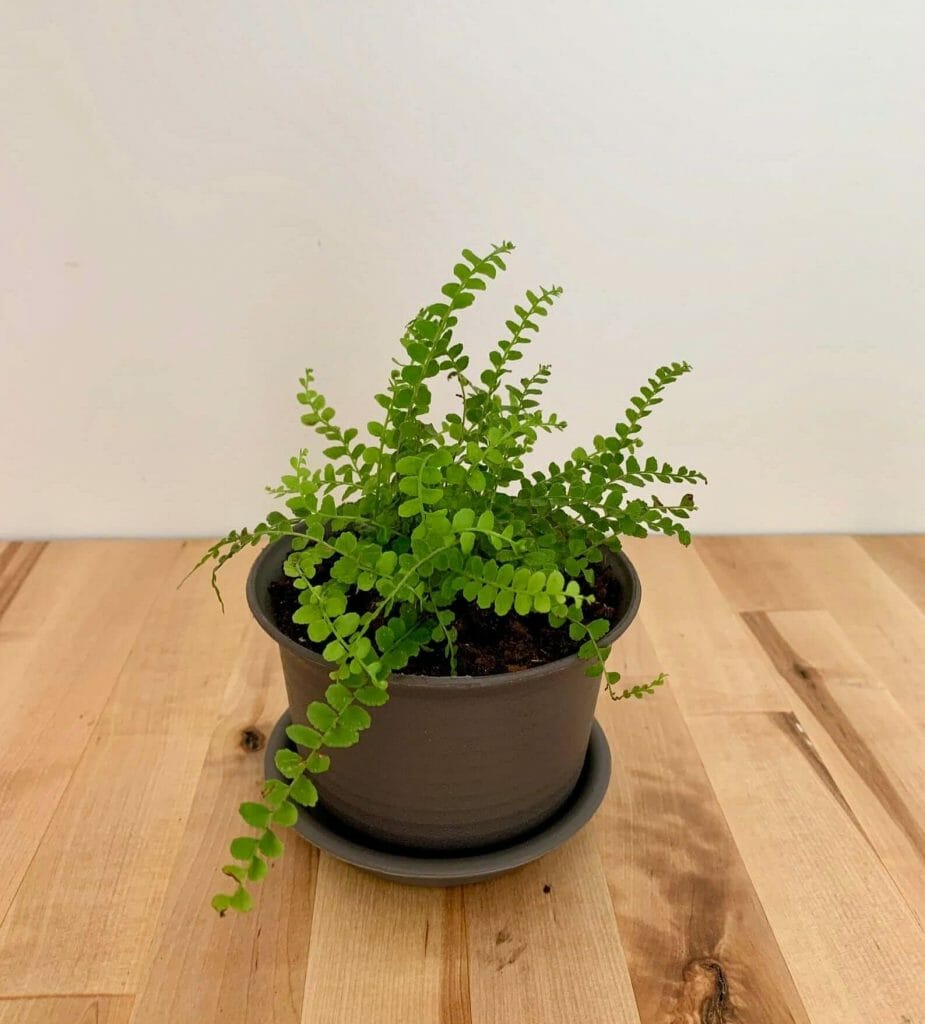
About:
Lemon Button ferns, or Nephrolepis cordifolia, is a small and delicate fern indigenous to Hawaii. It gets its name from a subtle lemony scent that it gives off during its growing season. This plant is a beautiful, low-maintenance option for anyone interested in adding a fern to their collection.
How to Care for Lemon Button Ferns:
| DIFFICULTY: | Easy. |
| LIGHT: | Anything from bright, indirect light to lower light conditions will do. |
| TEMPERATURE: | This plant loves warm temperatures of 60F and up. |
| WATERING: | This plant enjoys moist soil conditions, but it will tolerate its soil drying out every now and then. |
| FEEDING: | Fertilize a few times a year, during the growing season. |
| TOXICITY: | Pet and human-friendly. |
11) Holly Fern (Cyrtomium falcatum)
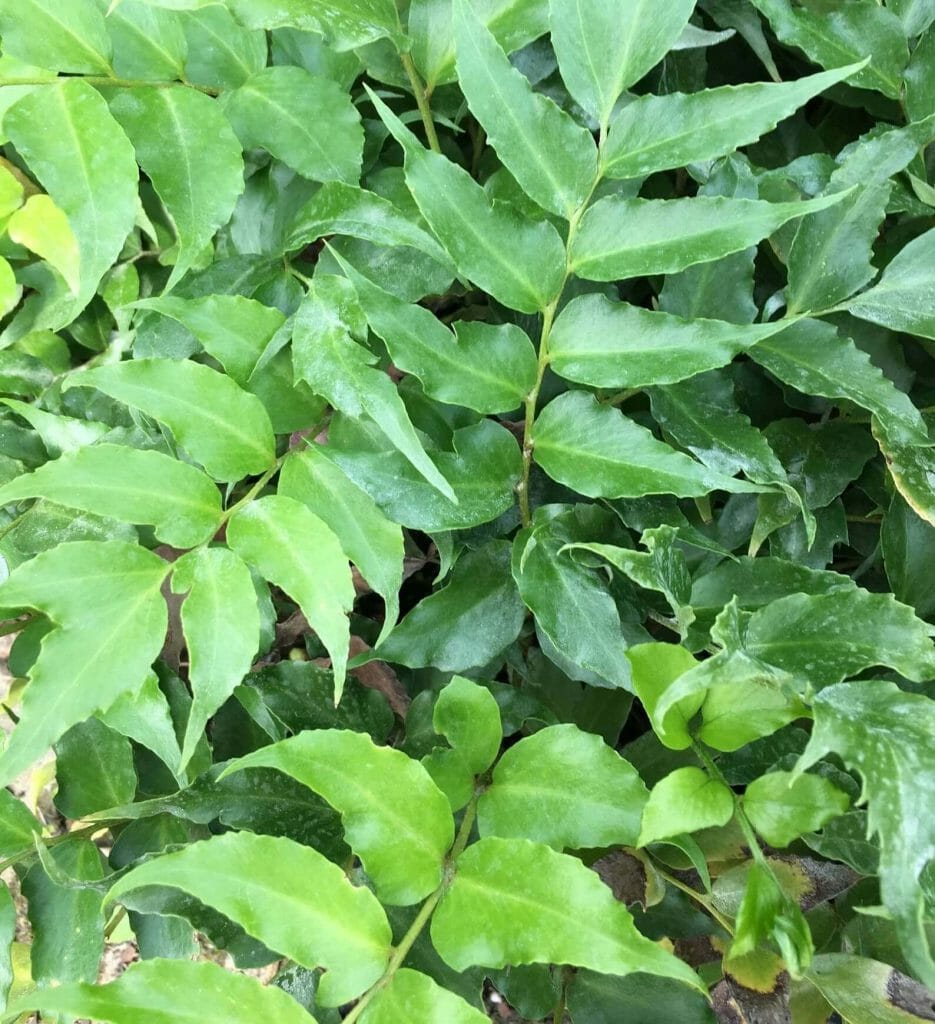
About:
Holly ferns, or Cyrtomium falcatum, are known for their serrated, holly-like foliage. This fern can tolerate low lighting and creates beautiful dark green fronds, making it a unique option for indoor plant collectors.
How to Care for Holly Ferns:
| DIFFICULTY: | Medium. |
| LIGHT: | Thrives in anything from full shade to bright, indirect lighting. |
| TEMPERATURE: | Enjoys anything from 50 to 70F. |
| WATERING: | Water regularly whenever the topsoil feels dry. |
| FEEDING: | Fertilize this fern during the growing season with diluted, balanced fertilizer. |
| TOXICITY: | Pet and human-friendly. |
12) Dallas Fern (Nephrolepis exaltata ‘Dallas’)
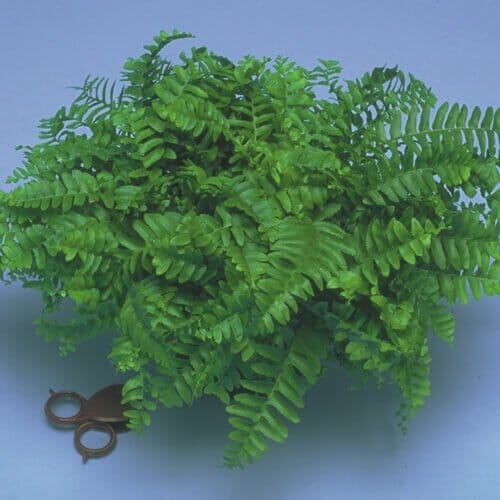
About:
Dallas ferns, or Nephrolepis exaltata ‘Dallas’, are a smaller relative to the Boston fern. They are a beautiful, low-maintenance plant to care for and make a lush and lively addition to any room.
How to Care for Dallas Ferns:
| DIFFICULTY: | Easy. |
| LIGHT: | They prefer bright, indirect sunlight. |
| TEMPERATURE: | This plant does best in temperatures ranging from 60 to 75F. |
| WATERING: | Water this plant regularly to maintain moist, but not soggy soil. |
| FEEDING: | Feed monthly with a balanced houseplant fertilizer. |
| TOXICITY: | Pet and human-friendly. |
13) Japanese Painted Fern (Athyrium niponicum)
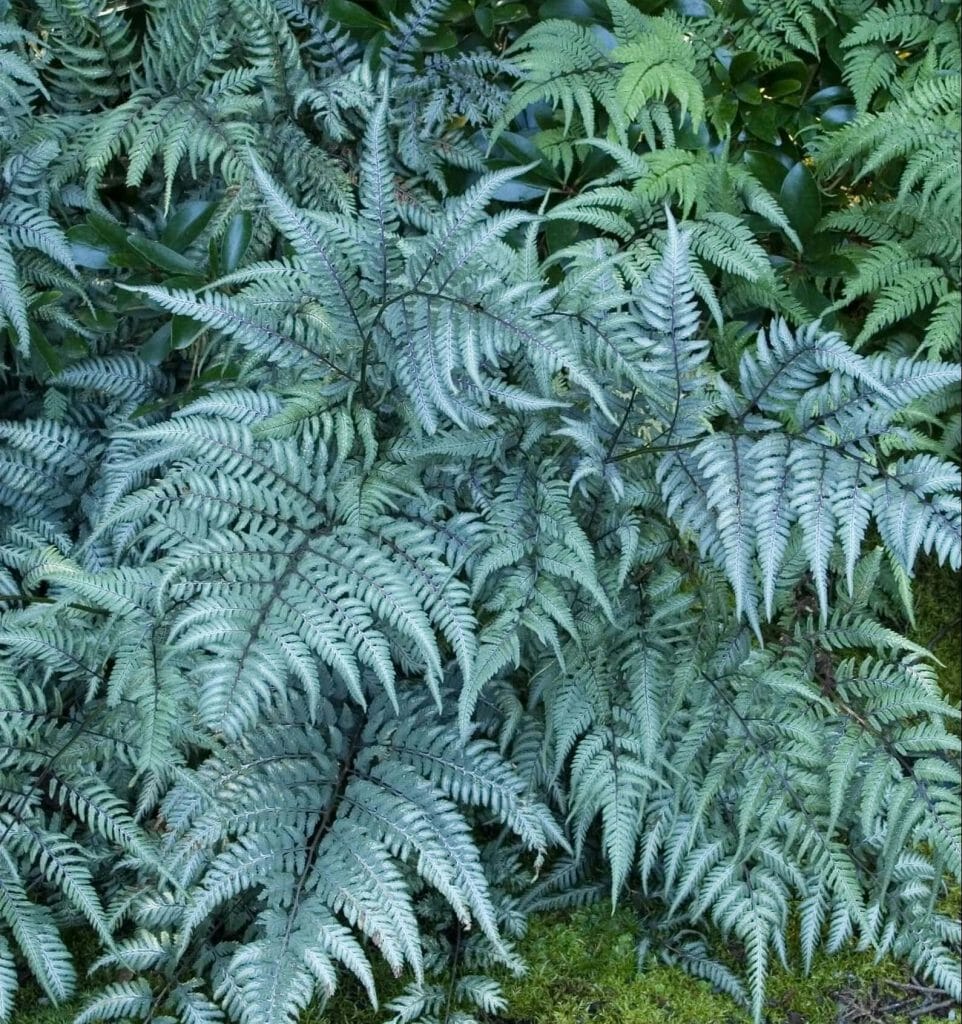
About:
The Japanese Painted fern, or Athyrium niponicum, comes from Eastern Asia. This colorful fern gets its name due to its silver fronds and dark red stems, making it an appealing option to grow at home. While most fronds offer an evergreen backdrop to your garden, this beauty will stand out like a work of art and liven up any space.
How to Care for Japanese Painted Ferns:
| DIFFICULTY: | Medium. |
| LIGHT: | This plant cannot tolerate direct sunlight. It does best in shaded or medium indirect light. |
| TEMPERATURE: | Temperatures around 70F are great for this plant. |
| WATERING: | Water enough to maintain moist soil. |
| FEEDING: | Use a houseplant fertilizer in the spring. |
| TOXICITY: | Pet and human-friendly. |
14) Royal Fern (Osmunda spectabilis)
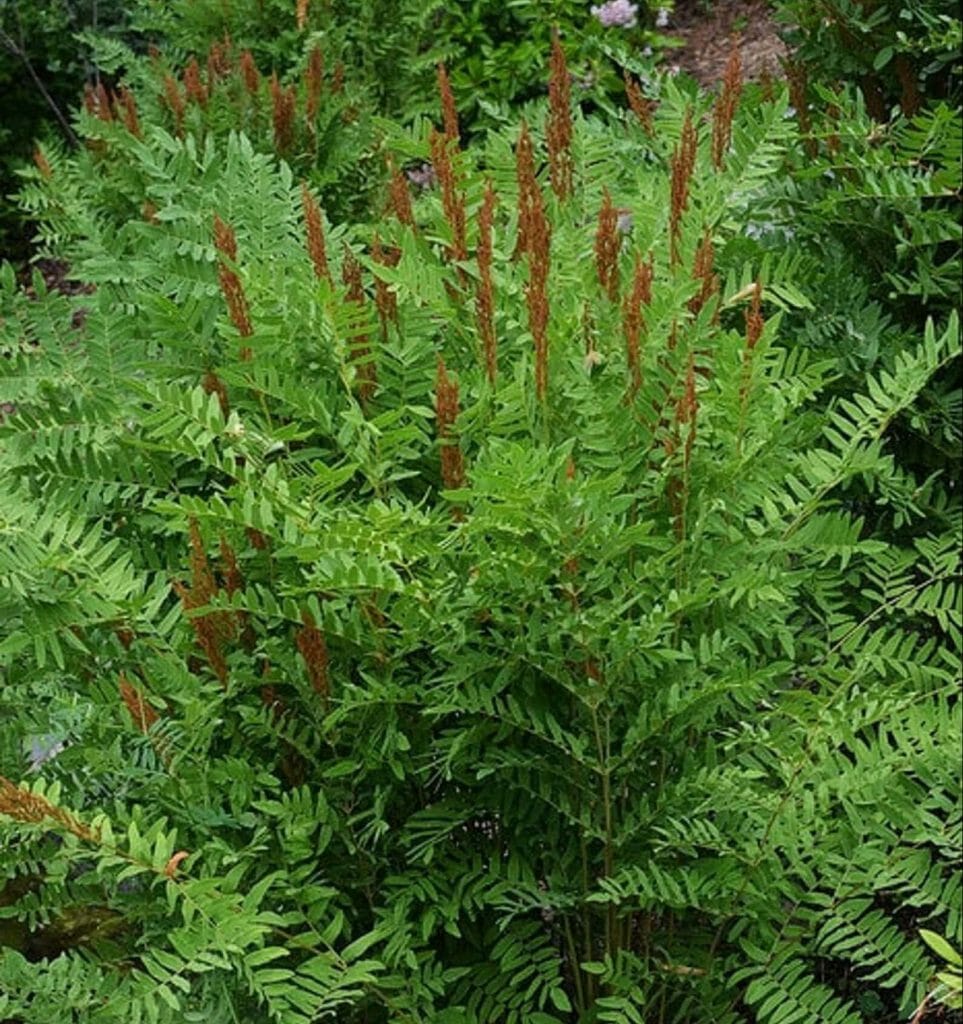
About:
Royal ferns, or Osmunda spectabilis, are large ferns that can grow up to one meter high. They produce large, light green foliage, adding a bold statement to your indoor decor.
How to Care for Royal Ferns:
| DIFFICULTY: | Medium. |
| LIGHT: | This plant needs partly-shaded or fully-shaded light conditions. |
| TEMPERATURE: | The ideal temperature for this plant is 65 to 75F. |
| WATERING: | Water this plant often enough to maintain moist soil. |
| FEEDING: | Fertilizer is not necessary for this plant. |
| TOXICITY: | Pet and human-friendly. |
15) Blue Star Fern (Phlebodium aureum)
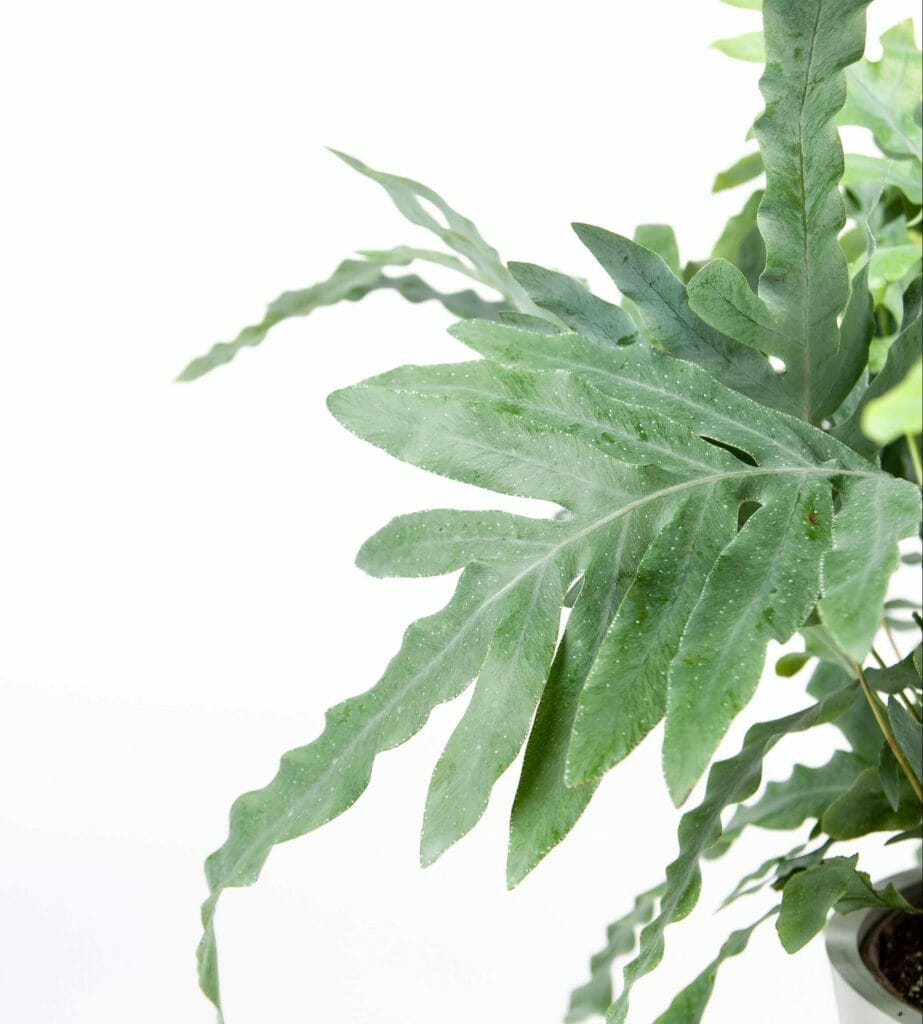
About:
Blue Star Ferns, or Phlebodium aureum, are known for their large fronds. This is a hardy indoor fern that makes a great houseplant. Since it is an epiphytic fern, it doesn’t need as much moisture as other varieties, making it a more tolerant houseplant than other species of this plant.
How to Care for Blue Star Ferns:
| DIFFICULTY: | Easy |
| LIGHT: | Low to medium lighting. |
| TEMPERATURE: | Does best in temperatures ranging from 50 to 80F. |
| WATERING: | Water this plant when the surface soil becomes completely dry. |
| FEEDING: | Use a well-balanced fertilizer once a month or less. |
| TOXICITY: | Pet and human-friendly. |
16) Australian Tree Fern (Cyathea cooperi)
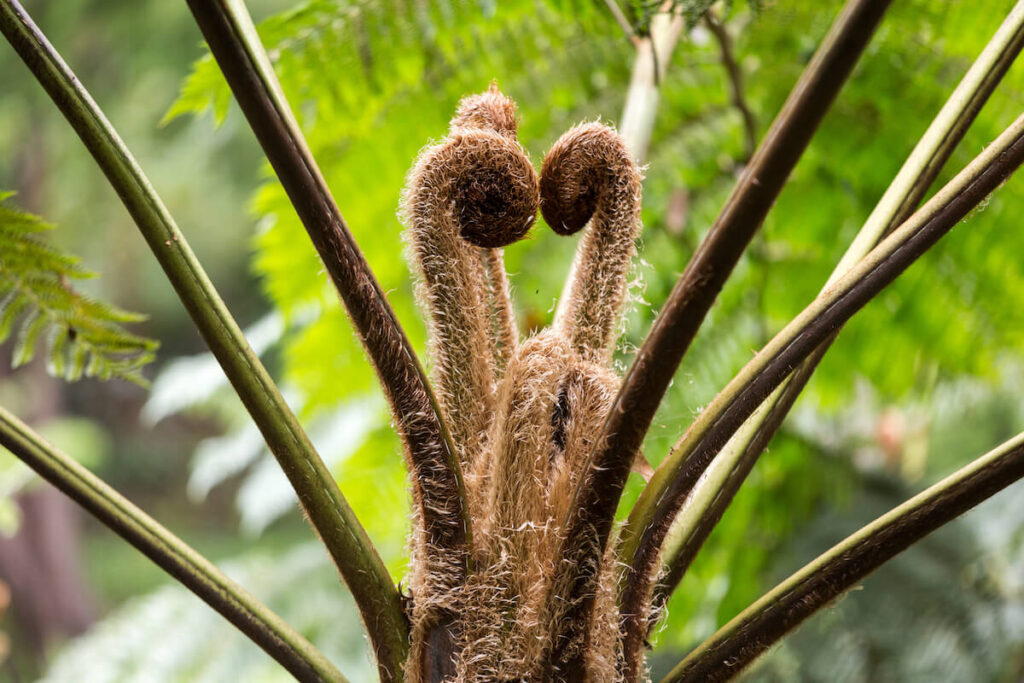
The Australian Tree Fern, native to parts of Australia (as you might have guessed), has large, feathery fronds that can grow several feet long. Its trunk is slender and covered in brown, coarse hairs. I love the fact these ferns are rapid growers (under the right conditions) and work really well as a centerpiece in an indoor garden.
| DIFFICULTY: | Moderate |
| LIGHT: | Bright, indirect light throughout the day. |
| TEMPERATURE: | 65-80°F (18-27°C) |
| WATERING: | Keep soil consistently moist |
| FEEDING: | Monthly during the growing season with balanced liquid fertilizer |
| TOXICITY: | It can be poisonous if consumed by pets or humans |
17) Button Fern (Pellaea rotundifolia)
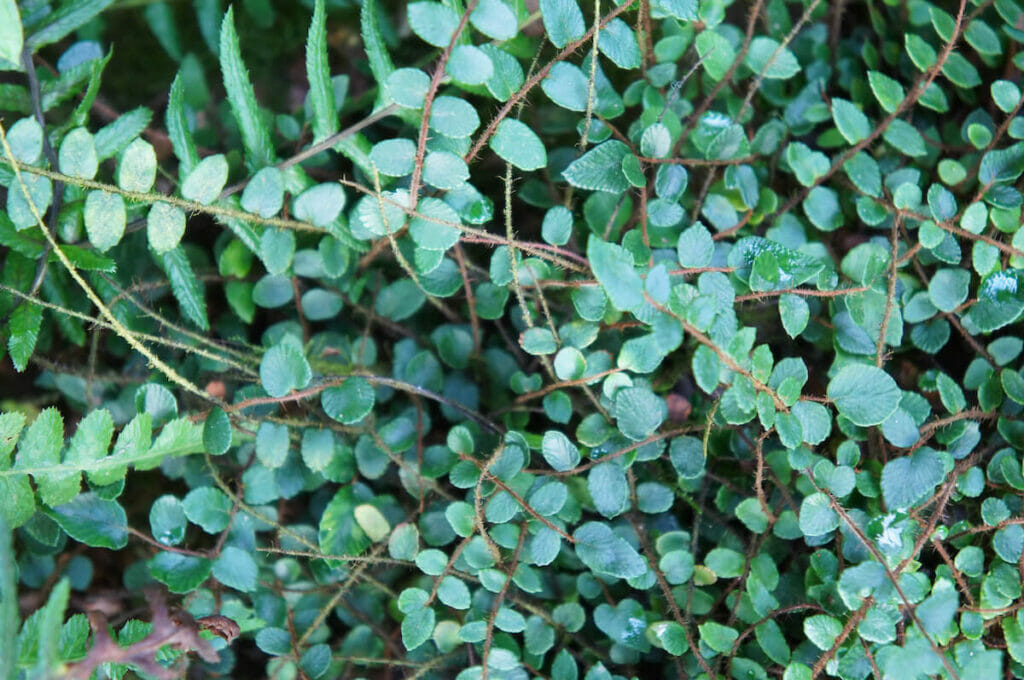
Native to New Zealand, the Button Fern is known for its unique round, button-like leaflets on arching stems. I think the dark green leaves contrast beautifully with its black stems.
| DIFFICULTY: | Easy |
| LIGHT: | Bright, indirect light throughout the day |
| TEMPERATURE: | 60-75°F (15-24°C) |
| WATERING: | Let the top inch or two dry out before watering again |
| FEEDING: | Every 6-8 weeks with a balanced fertilizer during the growing season |
| TOXICITY: | Non-toxic to pets |
18) Cretan Brake Fern (Pteris cretica)
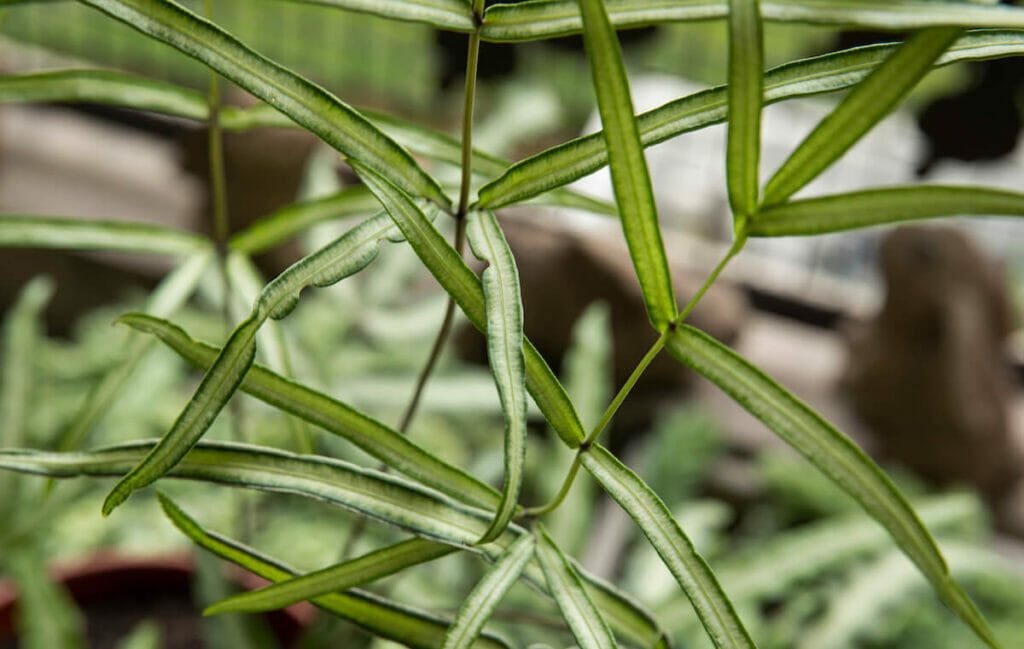
Originating from Europe and Asia, the Cretan Brake Fern has light green, arching fronds with a lace-like appearance. They can adapt to a variety of conditions, making them suitable for a range of interior living spaces.
| DIFFICULTY: | Easy care |
| LIGHT: | Bright, indirect light throughout the day |
| TEMPERATURE: | 60-75°F (15-24°C) |
| WATERING: | Keep soil consistently moist (it’s worth checking the soil every 3 to 5 days I find) |
| FEEDING: | Monthly with a balanced liquid fertilizer |
| TOXICITY: | Toxic to pets if ingested |
19) Crocodile Fern (Microsorum musifolium)
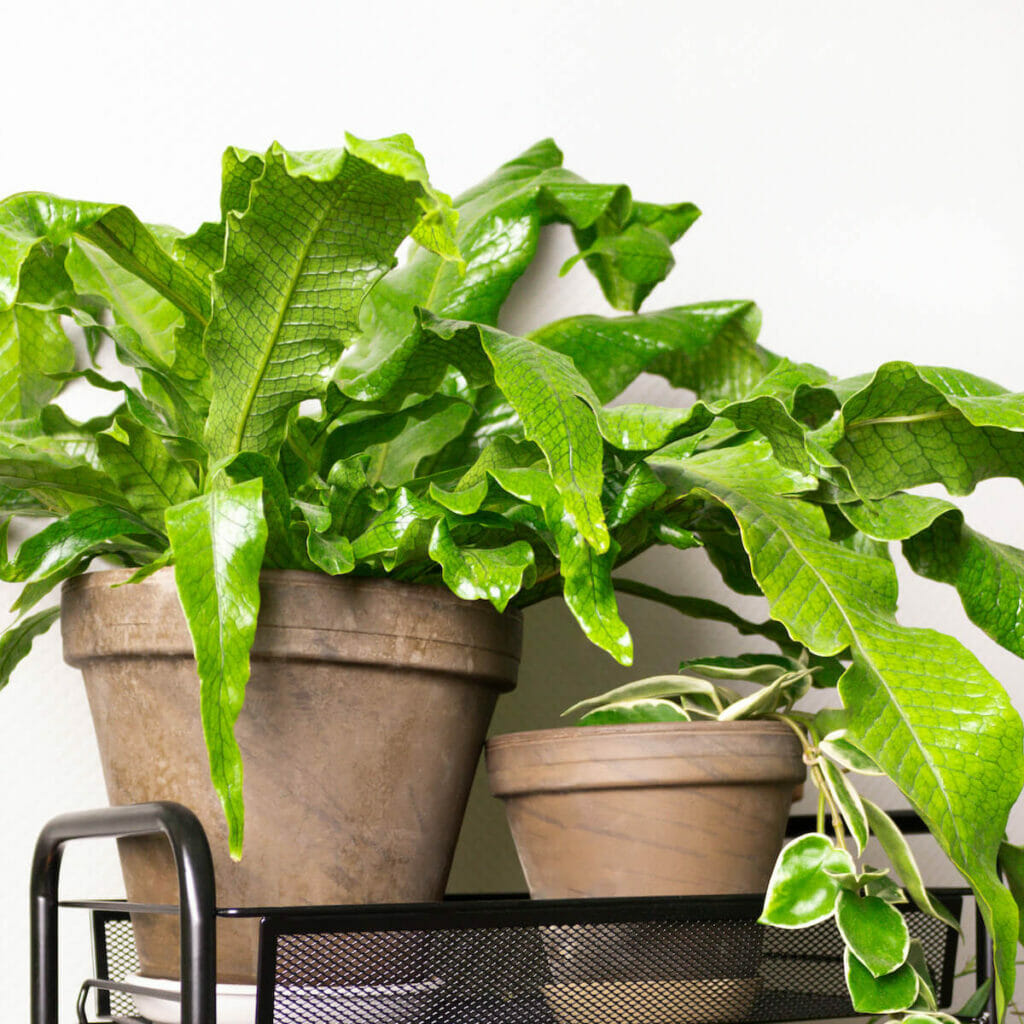
Native to Southeast Asia, Microsorum musifolium showcases textured leaves that resemble crocodile skin. This fern enjoys a humid environment and is popular for its unique appearance. I find these ferns a little challenging to grow at home as they need
